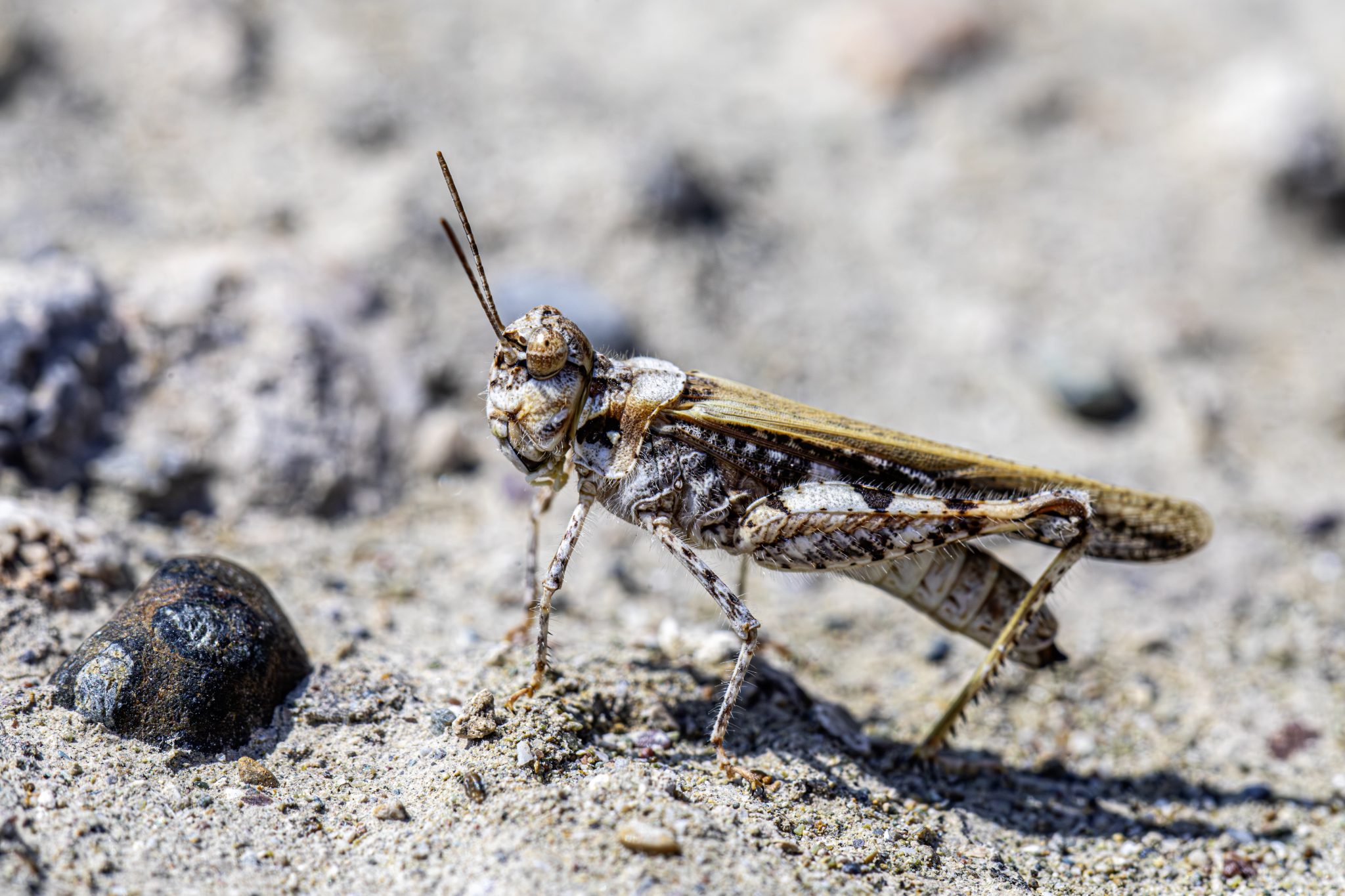Here’s a detailed profile of the Common Digging Grasshopper (Acrotylus insubricus), a ground-dwelling grasshopper known for its affinity for sandy habitats.
🦗 Common Digging Grasshopper Overview
- Scientific name: Acrotylus insubricus
- Common name: Common Digging Grasshopper
- Family: Acrididae (short-horned grasshoppers)
- Subfamily: Oedipodinae (band-winged grasshoppers)
- Body length:
- Males: ~15–20 mm
- Females: ~22–28 mm
- Wingspan: 30–45 mm
🌍 Distribution and Habitat
- Range:
- Widely distributed in southern and central Europe, North Africa, and parts of western and central Asia.
- In Europe, most common in the Mediterranean region but extends north into central countries where suitable habitat exists.
- Preferred habitat:
- Dry, sandy, and sparsely vegetated areas
- Riverbanks, dunes, steppe, gravel pits, fallow land
- Areas with loose soil for egg-laying
🪵 Ecology and Behavior
- Activity:
- Diurnal, active in warm sunny weather.
- Often rests motionless, blending in with sandy or stony backgrounds.
- Quick, low flights when disturbed, sometimes flashing hindwings with faint color.
- Diet:
- Herbivorous — feeds on grasses and small herbaceous plants typical of dry habitats.
- Digging behavior:
- Females excavate small holes in the ground with their ovipositors to deposit egg pods.
🔍 Identification
- Coloration:
- Highly cryptic: mottled gray-brown to sandy beige, matching the substrate.
- Body and forewings patterned with irregular dark speckles.
- Hindwings usually pale, sometimes with a light smoky band near the edge.
- Build:
- Typical short-horned grasshopper shape with relatively short antennae.
- Hind femora strong for jumping.
🔄 Life Cycle
- Generations: Usually univoltine (one generation per year).
- Overwintering stage: Eggs buried in the soil.
- Adult season:
- In Mediterranean climates: May–October
- In temperate regions: mid-summer to early autumn
⚠ Conservation Status
- IUCN status: Not globally threatened.
- Locally common in suitable habitats but can be absent from intensively farmed or heavily urbanized landscapes.
- Vulnerable to habitat loss from riverbank stabilization, dune destruction, and scrub encroachment.
🔎 Interesting Facts
- Like many band-winged grasshoppers, it relies on camouflage rather than bright colors for defense.
- The genus Acrotylus includes several species adapted to arid and semi-arid environments, with excellent tolerance for heat and sun exposure.
- When startled, its short burst flights end quickly, and it blends seamlessly into the ground on landing.
Visited 72 times, 1 visit(s) today
Views: 3991
Subscribe to the newsletter:
